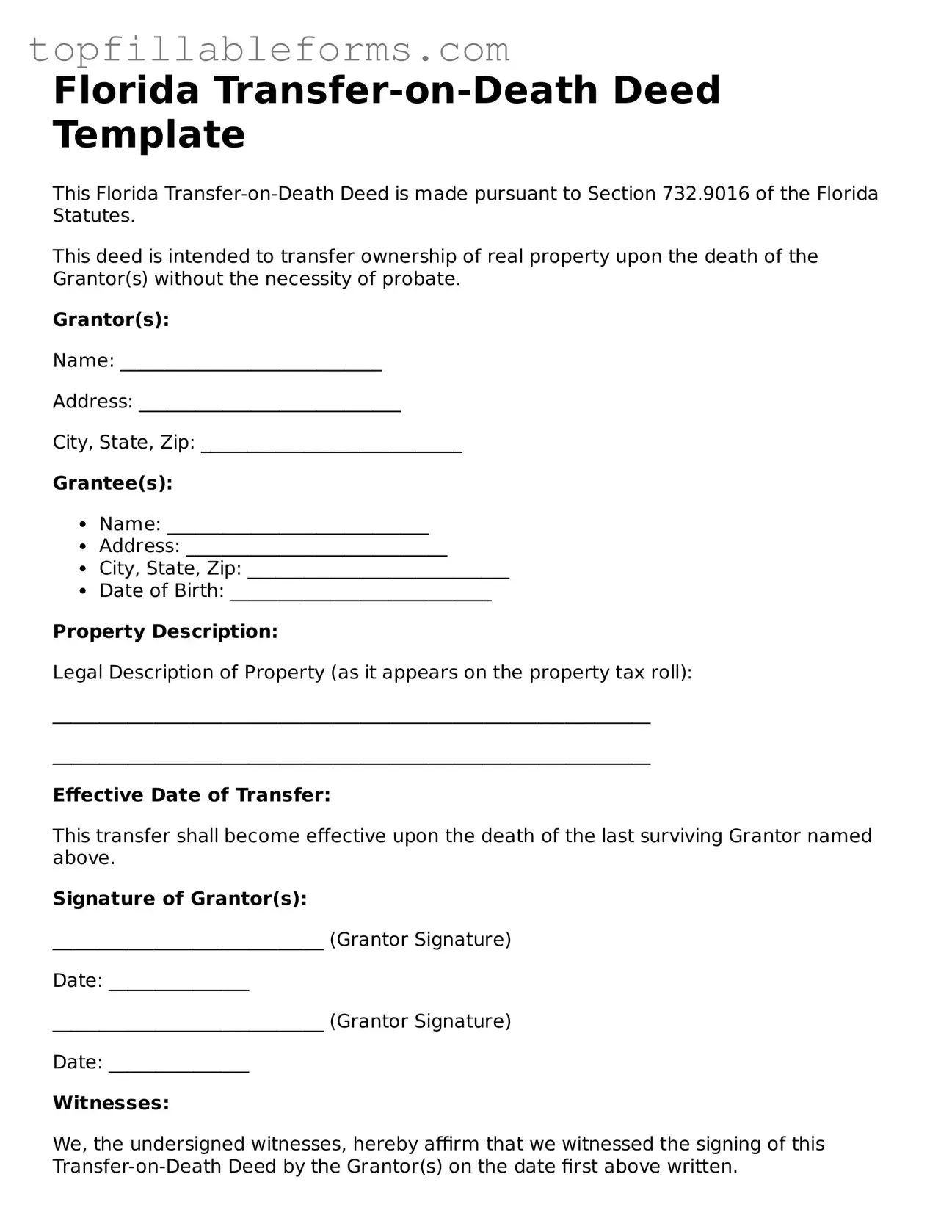Florida Transfer-on-Death Deed Template
This Florida Transfer-on-Death Deed is made pursuant to Section 732.9016 of the Florida Statutes.
This deed is intended to transfer ownership of real property upon the death of the Grantor(s) without the necessity of probate.
Grantor(s):
Name: ____________________________
Address: ____________________________
City, State, Zip: ____________________________
Grantee(s):
- Name: ____________________________
- Address: ____________________________
- City, State, Zip: ____________________________
- Date of Birth: ____________________________
Property Description:
Legal Description of Property (as it appears on the property tax roll):
________________________________________________________________
________________________________________________________________
Effective Date of Transfer:
This transfer shall become effective upon the death of the last surviving Grantor named above.
Signature of Grantor(s):
_____________________________ (Grantor Signature)
Date: _______________
_____________________________ (Grantor Signature)
Date: _______________
Witnesses:
We, the undersigned witnesses, hereby affirm that we witnessed the signing of this Transfer-on-Death Deed by the Grantor(s) on the date first above written.
Witness 1: _______________________________ (Signature)
Witness 1 Name: ________________________
Date: _______________
Witness 2: _______________________________ (Signature)
Witness 2 Name: ________________________
Date: _______________
Notary Acknowledgment:
State of Florida
County of ____________________________
On this ______ day of _______________, 20__, before me appeared __________________, who is personally known to me or who has produced _____________________ as identification and who did take an oath.
____________________________________
Notary Public Signature
Notary Public Name: __________________
Commission No: _______________________
My Commission Expires: ________________
